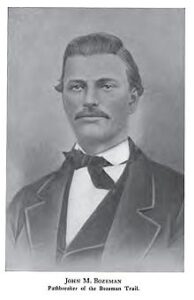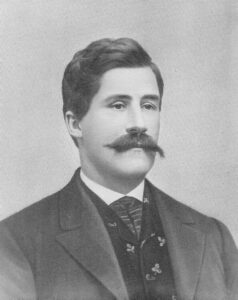By PJ Parrish
Today’s submission is a second attempt. I read the first draft of this a couple years back and I thought it was a hot mess back then. We didn’t print it here because I thought the writer needed a second chance. So here is the new version. Give it a read and we’ll talk. The writer calls this a light mystery with serious intent.
CHAPTER ONE
It’s not easy starting your life over when people think you murdered your husband and got away with it. Especially in a place like Morning Sun, Iowa.
The folks in Morning Sun — there’s only about four hundred of them — don’t have much tolerance for weird people, especially a rattlebrained housewife who tries to bail out of her marriage after a couple of little marital “tiffs.”
But I was born and bred in Morning Sun, and on that Fourth of July when my husband Brad came at me with the Ginsu knife we had just bought off a late-night infomercial, I didn’t figure I had a lot of options.
The police believed I killed him. My neighbors believed the police. My relatives believed the neighbors. But fortunately for me, the jury didn’t believe any of them.
So I walked. Actually, I ran.
Three thousand miles to be exact, all the way to Las Vegas. I had to get out of Morning Sun and I figured Las Vegas was a good place to reinvent myself. It’s the kind of town where everyone takes big chances. It’s the kind of place where dwelling on the past is about the only thing that’s really a sin.
Like I was doing now.
I rubbed my neck, pushed Brad out of my head and myself out of my chair. My Payless pinchers were where I had kicked them off when I came back to the office and hour ago. I glanced up at the surveillance monitor. So was Mr. Cranko. He was still planted like a Buddha at blackjack table 15, his sausage fingers ruffling his chips, the ash of his Marlboro about to fall to the green felt.
A tap on the door drew my eye to the door. Pete, my night manager, came in and tossed a yellow paper on my desk.
“Hey boss,” he said. He glanced up at the monitor. “How much is Cranko in?” he asked.
“Twenty-seven thousand,” I said.
Pete shook his head. “How does a Searchlight plumber get that much to play with?”
I shook my head even though I knew Cranko was a meth dealer. Half the lizard people in the desert were. I looked down at the yellow paper.
“How many?” I asked, giving the paper a poke.
Pete shrugged. “Just two. One for panhandling. The other for soliticting.”
“Male or female?”
“We couldn’t tell.”
_______________________________
Okay, we’re back. What is the basic problem here? C’mon, I know you all pay attention when we preach about this at The Kill Zone.
Yup, that’s right. Too much backstory. Too much thinking, remembering, musing, regretting. I wish I had enough room here to show the original version because this is actually much better. But this still isn’t ready for prime time. The protag’s past is interesting, but it’s just that — past tense. We’re already about 350 words in and nothing much is happening IN THE PRESENT. Sure, we get some dialogue and I suppose Pete coming in and interrupting the protag’s thoughts might pass for “action”. But it is interesting? Where is the disturbance in the norm, as James always pleads for?
Okay, true confession. My sister Kelly and I wrote this. It was one of our freshman attempts many many years ago. I found it while cleaning out the hard drive the other day and we decided to drag it out, hit it with the paddles and see if it could be resusitated.
Sigh. I dunno. I really like this protag and the arc of the story we wanted for her — she’s trying hard to make up for some bad life decisions, she’s in a dead-end job in Vegas, and she can’t find a new road forward. Her arc involves not just reinventing herself but also rebuildingg a badly damaged relationship with her dad. But this first chapter is fatally flawed because our desire to impress you with her backstory is getting in the way of the forward motion. SOMETHING HAS TO COMPELL HER TO CHANGE.
But no. We go on for about seven more pages describing the drab old-fashioned casino where she works, her sad attempts to start dating again, and how envious she is of the glamorous new casino, The Monolith, opening next door. So she opens her window and watches the klieg lights, the red-carpet crowds next door. More thinking, regretting, sighing…
Then, guess what happens at the end of chapter 1? Here it is:
I started away from the window.
That’s when I heard the scream.
A second later, I heard the thud of something against metal. My first thought was that something had fallen on the Dumpster in the alley.
But things, inanimate things, didn’t scream.
I went back to the window, and looked up. Nothing but the klieg lights waving like windshield wipers against the navy blue sky. I forced myself to look down.
It was so close to my open window, I could smell the blood.
To make a too long story short, a showgirl has fallen off the roof of the Monolith. Or was she pushed? Well, that’s where the story — and our protag’s story — finally begins to come alive. Here’s the opening of Chapter 2:
I knew she was dead, but her eyes spoke to me.
They were green, probably from contacts she didn’t need, but an emerald green nonetheless. A red and gold sequined headdress covered her blonde hair, and her long legs were contorted under her. Her black fishnet stockings were caught on the chain-link fence like a giant spider web.
I watched as red feathers floated down, one settling on her forehead, right next to the line of blood that ran from her ear.
So, why am I sharing this? Not for sympathy. We know that if we want to do something with this story, we have a lot of work to do. I’m sharing this so you really understand a couple things about effective openings:
- Yes, your character’s backstory is important because it provides a context for their arc in your present-tense plot. And you want the reader to care about your protag. BUT…something in the present must trigger the protag’s journey out of the past.
- Act first and explain later. I think our opening paragraph is fine — it’s a good tease. But we need to find a way to get to the catalyst event — the dead showgirl — more quickly and weave our protag’s backstory into the plot later.
- Don’t waste time on dialogue and secondary character that do nothing to move your plot along. This means the stuff with Pete and Mr. Cranko has to go. They add nothing. Remember: Your real estate is precious in the early pages. Don’t clutter it up with flaccid dialogue and spear-carriers.
- Make your protag pro-active not re-active. Part of our character arc is that our protag has always dreamed of being a private detective. But we need to hint at this in chapter 1. Right now, she’s boring. We need to juice her up.
- First person is tough. Everything is filtered through one POV and man, if your character is moping and groping, who’s gonna care? If you chose first person, make your narrator sing. Even if it’s off-key at first.
- Don’t make this common mistake: Spend time, pages and energy world-building the norm, then when something bad happens to disrupt it, the reader will care even more. Nope. Hint at a norm but don’t belabor it. Get your plot moving and later, you can layer in the “norm” that has been lost.
- And find a way to tell us your protag’s name. Big duh for us….we don’t tell you her name until page 23.
Whelp, there you have it. Oh, I forgot one more thing I’d like you to take away from this lesson, maybe the most important thing:
8. Everyone writes crap. We had already published two of our Louis Kincaid series books when we wrote this. What’s weird is neither of our Louis books had these flaws. What happened to us? [I am laughing as I write this] Shoot, I don’t know. I think we got so enamoured of our character and her sad little life back in Morning Sun, Iowa, that we forgot that we needed a plot. In trying to save her, we lost our story. So when you do write something bad — and you will — set it aside, let it bake a few weeks, months or years in the drawer or hard drive. Then pull it out and give it a whiff.
Does it smell like cheese? Then it is. Admit it and try again. To paraphrase Woody Allen, sharks and writers die if they don’t keep moving.








 I’m lucky. Unlike many writers, I have a helpful husband, and the luxury of an office in my home. I don’t have children or relatives to care for. I’m a full-time author and don’t have to go to a job.
I’m lucky. Unlike many writers, I have a helpful husband, and the luxury of an office in my home. I don’t have children or relatives to care for. I’m a full-time author and don’t have to go to a job.




